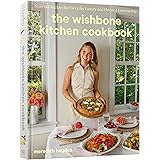It is widely acknowledged that simple, comforting dishes often hold the most significant place in culinary tradition. A classic example is the ubiquitous garlic bread, a universally loved side that frequently accompanies countless meals across various cultures. While the accompanying video above provides a visual journey through the preparation of roasted garlic bread, capturing the satisfying sounds of slicing, squeezing, grating, and sizzling, the nuances of achieving truly exceptional flavor can be further explored. This supplementary guide aims to delve deeper into the artistry and science behind transforming humble ingredients into a truly unforgettable experience, moving beyond mere instruction to provide a comprehensive understanding of each critical step involved in crafting this beloved staple.
The Art of Roasting Garlic for Superior Flavor
The foundation of truly exceptional roasted garlic bread begins, predictably, with the garlic itself. While raw garlic offers a pungent, sharp bite, its transformation through the roasting process is nothing short of culinary magic. When garlic is slowly subjected to heat, often enveloped in olive oil or foil, a remarkable biochemical reaction occurs; the allicin, responsible for garlic’s characteristic sharpness, is broken down and converted into sweeter, mellower compounds. This process not only softens the cloves to a spreadable, buttery consistency but also develops profound caramelization, enriching its flavor profile with nutty, earthy, and subtly sweet notes that are simply unattainable otherwise.
The initial preparation for roasting is quite straightforward, yet it is a step that significantly influences the final outcome. Whole heads of garlic are typically chosen, with just the very top quarter of the head being sliced off to expose the individual cloves. A generous drizzle of olive oil, perhaps complemented by a pinch of salt and pepper, is then applied over the exposed cloves before the head is wrapped securely in foil or placed in a small, oven-safe dish. This careful wrapping creates a miniature steam oven, ensuring the cloves cook evenly and retain their moisture, ultimately yielding a soft, flavorful roasted garlic that is easily expressed from its skin.
Crafting the Irresistible Roasted Garlic Butter Spread
Once the garlic has been exquisitely roasted to perfection, its soft, caramelized cloves become the star component of the signature butter spread. The mellow, sweet essence of the roasted garlic is gently pressed from its papery skin and meticulously incorporated into softened unsalted butter, ensuring an even distribution of flavor. This infusion process is where the spread truly takes on its distinctive character, moving far beyond a simple mixture to become a rich, aromatic emulsion that serves as the heart of any outstanding roasted garlic bread. The butter, acting as a carrier, absorbs and accentuates the complex flavors of the garlic, preparing them to be deliciously absorbed by the chosen bread.
To further elevate this foundational butter, a thoughtful selection of complementary ingredients can be introduced, adding layers of complexity and freshness. Fresh herbs, such as finely chopped parsley, chives, or even a hint of thyme or oregano, are often folded into the mixture, providing bright, herbaceous counterpoints to the garlic’s richness. Some recipes might also call for a touch of grated Parmesan cheese, which contributes a salty, umami depth, enhancing the overall savoriness. A pinch of red pepper flakes can introduce a subtle warmth, while a squeeze of fresh lemon juice is sometimes added to cut through the richness and brighten the flavor profile, showcasing the versatility inherent in this seemingly simple condiment.
Selecting the Perfect Loaf: Bread Choices for Roasted Garlic Bread
The choice of bread serves as the canvas for the rich roasted garlic butter, and this decision significantly influences the texture and overall eating experience of the finished product. Different types of bread offer distinct qualities that can either elevate or detract from the dish, making careful consideration essential for optimal results. A classic French baguette, for instance, is often favored for its crisp crust and relatively soft, airy interior, which readily absorbs the butter without becoming soggy, providing an ideal textural contrast. Its elongated shape also lends itself beautifully to uniform slicing and generous spreading, making it a reliable choice for traditional roasted garlic bread.
However, other bread varieties can also be employed to achieve different culinary outcomes, offering a diverse palette for the home cook. A hearty sourdough loaf introduces a tangy complexity that beautifully complements the sweet notes of roasted garlic, creating a more sophisticated flavor profile. Italian bread, often characterized by a softer crust and a denser crumb, offers a more substantial bite, making it an excellent option for those who prefer a chewier texture. Regardless of the specific type chosen, it is important that the bread is relatively fresh but not overly soft, possessing enough structural integrity to hold its shape and toast effectively under the heat of the oven, preventing it from collapsing under the weight of the flavorful spread.
Assembly and Baking Brilliance: Achieving the Ideal Texture
With the roasted garlic butter prepared and the perfect loaf selected, the assembly phase is where the individual components converge to create the beloved roasted garlic bread. The bread is typically sliced either in half lengthwise or into individual portions, creating ample surface area for the lavish application of the aromatic spread. It is crucial to ensure that the butter is distributed generously and evenly across the bread’s surface, reaching into every crevice, as this impregnation is what will ultimately deliver that deeply satisfying flavor in every bite. Adequate coverage guarantees a moist, flavorful interior while allowing the exterior to achieve a desirable crispness.
The baking process itself is a delicate balance, aiming to achieve a golden-brown exterior and a warmed, fragrant interior without drying out the bread. An oven preheated to an appropriate temperature, often around 375-400°F (190-200°C), is typically employed. The prepared bread is usually placed directly on a baking sheet or foil to allow for even heat circulation, preventing any part from becoming undercooked or overly browned. The initial bake often involves covering the bread with foil for a portion of the time, allowing the butter to melt and permeate the crumb thoroughly, after which the foil is removed to permit the crust to crisp up and develop its appealing golden hue, completing the transformation into perfectly baked roasted garlic bread.
Elevating Your Roasted Garlic Bread: Creative Variations and Serving Suggestions
While the classic roasted garlic bread recipe is undeniably delicious, there is ample room for creativity and personalization, allowing home cooks to adapt the dish to various palates and occasions. One popular variation involves the addition of various cheeses, such as mozzarella for a gooey, stretchy texture, or a blend of Italian cheeses like provolone and fontina for a more complex flavor profile. These cheeses are typically sprinkled generously over the buttered bread during the final stages of baking, melting into a golden, irresistible topping that adds an extra layer of decadence to an already rich dish, making it a true crowd-pleaser for any gathering.
Beyond cheese, other ingredients can be incorporated to create unique flavor experiences. A sprinkle of fresh chili flakes can introduce a subtle heat, while finely diced sun-dried tomatoes or olives can provide bursts of savory, tangy notes. For a more herbaceous twist, rosemary or sage can be minced and added to the butter, offering a deeper, more aromatic quality. Roasted garlic bread serves as an incredibly versatile accompaniment, pairing beautifully with a wide array of dishes, from hearty pasta meals and robust stews to crisp salads or grilled meats, proving its enduring appeal as both a humble side and a star in its own right. The exploration of these variations ensures that roasted garlic bread remains an exciting culinary endeavor, always open to new interpretations.











